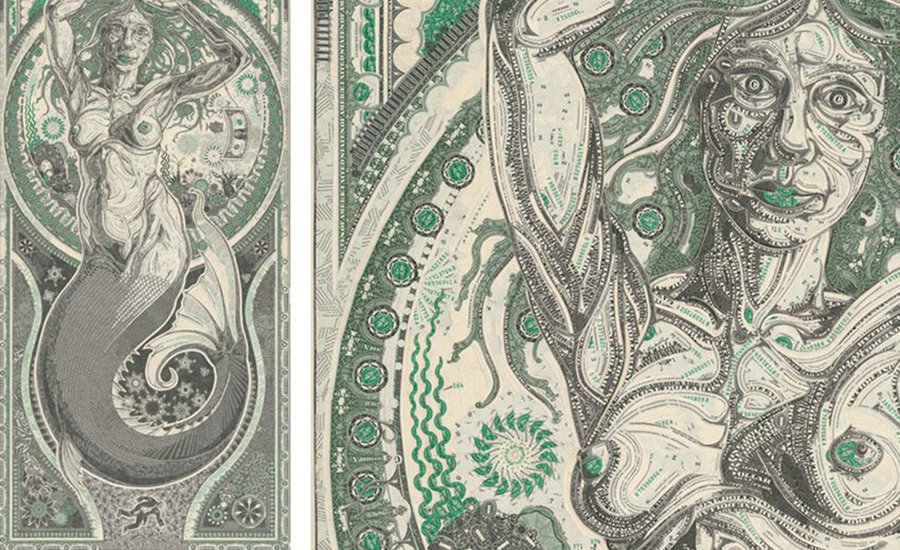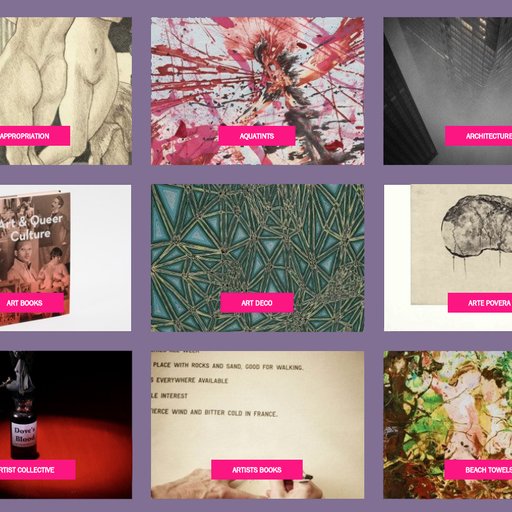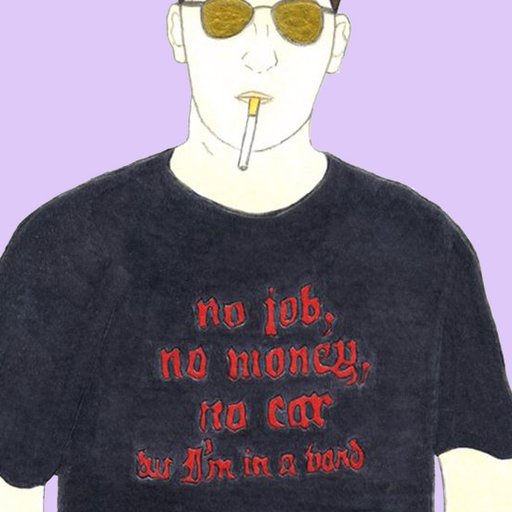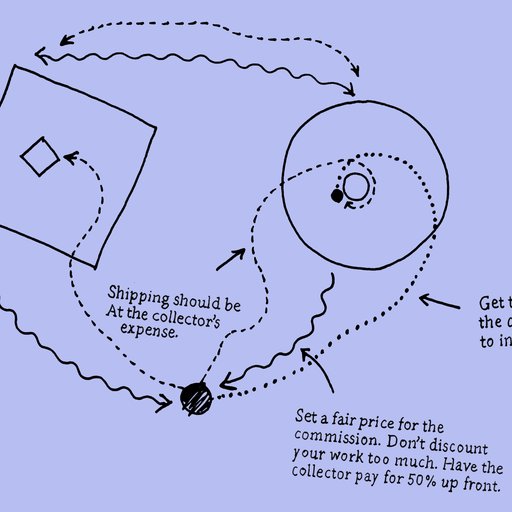Artists need money. The lucky ones already have it (we wrote about the art-world privileges of inherited wealth here ), and the artists who make salable, commercial works (like pretty paintings) might actually have a shot at making money from selling their art objects in galleries. But for artists interested in a more experimental, less marketable art practice, funding often has to come from elsewhere.
A few years ago, we wrote about four ways you can fund your art practice without selling art . One of those ways was via grants and fellowships; we outlined the 9 most prestigious (and hard to get) grants here . But unless you’re already well on your way to art-world stardom, the likelihood of scoring one of these highly sought-after grants is pretty much slim to none. So, to skew the odds towards your favor, you’ll need to find funders that are lesser known (and thus less competitive) and more specific to your actual needs. Finding these opportunities, though, isn’t exactly easy, and will take some serious digging to uncover.
Here, we’ll share everything you need to know about finding and applying for funding as an individual artist.
First Things First: Get Organized
Before you even begin looking for support, first take some time to really figure out what it is you need, and what it is you’re trying to accomplish. This worksheet from the folks at the Foundation Center is a handy place to start. Forcing yourself to clearly define your goals, what kind of support you require, what your timeframe is, is really the first step.
One more thing before we move on... All artists should be in the habit of documenting, cataloging, and archiving their work. If you have organized folders of digital images that represent your work (check out our how-to guide about photographing your work here ), and continuously keep it tidy and up to date, you’ll have a head start when it’s time to apply for opportunities. You’ll also want to have a current artist statement that clearly defines who you are as an artist. ( Read our guide on how to write an artist statement here .) It’s very likely, and encouraged, that you revise your statement depending on what the application asks of you. But it’s always helpful to have a master document to start with.
Identifying the Type of Support You Need
Support can comes in many different ways, from time and space to work (a residency) or cold hard cash to keep you afloat (a grant). Here are some of the kinds of support to apply for:
Cash grants and monetary awards like prizes are arguably the best kind of support. Non-restricted monetary grants and awards are essentially free monies that you can spend on whatever you want, whether it’s studio rent and art supplies or health insurance and dinner. The McArthur Genius grant is an example of this time of award, and like most non-restricted cash grants, it is very difficult to get. Grants and awards can also be project-specific, meaning that you do get cash, but you’re required to spend it on the particular project that you outlined in your application. Either way, grants and awards are often nomination-only, meaning you can’t apply for them. The ones you can apply for, are rare.
Fellowships can be similar to grants and awards; they reward artists for career accomplishments and excellence. United States Artists is an example, and though it is for emerging and mid-career artists, it is based on nominations only. Fellowship can also be working fellowships, meaning as a condition of receiving support, you’re required to produce something, whether it’s teaching a class, leading a workshop, giving a lecture, writing a research paper, etc.
Residencies sometimes offer financial compensation (and sometimes they charge fees), but for the most part, the type of support they offer is in-kind: studio space, access to equipment or production facilities, access to people and networks. There are a lot of residencies out there, and the ease of getting one is typically inversely proportionate to the amount of financial compensation they offer. In other words, getting accepted into a residency that charges money is relatively easy; getting accepted into a residency that offers money is not.
Understanding Support Sources: Public Vs. Private, Direct Vs. Indirect
Public sources of funding come from governmental and civic organizations. On a federal level, that’s the National Endowment for the Arts. On a municipal level, that could be your local arts council (i.e. The New York State Council on the Arts). And, in some cities, public transit authorities have budgets to fund pubic art, and additionally, city-funded construction projects are required to set aside one percent of their budget to fund public art (this program is called the Percent for Art program). And, last but not least, many National Parks have summer artist residency programs.
You might want to start with seeing what kind of local support your community offers. To look that up, check out this directory of state arts agencies from The National Assembly of State Arts Agencies (NASAA). You can also filter resources by state on the Americans for the Arts' website . Just note that a lot of public support for the arts isn’t necessarily financial. Instead, it’s often in the form of free or subsidized studio space, exhibition space, public exhibition opportunities, or contracted public-facing projects.
Private supporters include foundations , which create grants typically from a single financial source (like the Pollack-Krasner Grant, which is funded the the artists’ estates); non-profits , which raise money from a variety of sources and then create resources available to artists, sometimes in the form of financial “re-grants;” corporations , which treat contributions to artists as business expenses; and individual donors , or “crowd-sourced” funding, like Kickstarter or Indiegogo.
Now, what’s important to understand is that most art funding goes to organizations, rather than individual artists, since charitable donations to 501 (3)(c) non-profit organizations are tax deductible, whereas direct support to individual artists is not. This means that you’re most likely to receive funding through a non-profit, or by partnering with a fiscal sponsor.
What’s a fiscal sponsor , you ask? According to grantspace.org, an excellent resource for anyone seeking funding, “Fiscal sponsorship is a formal arrangement in which a 501(c)(3) public charity sponsors a project that may lack exempt status. This... allows you to seek grants and solicit tax-deductible donations under your sponsor's exempt status.” Fiscal sponsorship could be right for you if you’re working in a way that behaves like a non-profit organization, but isn’t. Many fiscal sponsors will charge you a fee, and you’ll be bound by a legal contract. The upside is, you’ll be eligible to receive support that’s restricted to organizations, and won’t need to rely only on support that’s open to individuals. Since most individual artists don’t operate like non-profits (and wouldn't necessarily benefit from fiscal sponsorship), we’ll leave it to grantspace.org to go into more depth about how to go about receiving it. Check out their comprehensive webinar on fiscal sponsorship here .
Where and How to Find Funding Opportunities
Now to get down to business. Finding a match between your needs and a funder’s goals isn’t easy, but there are certainly tools that help. Below we’ll outline some online databases and resources that will allow you to search for exactly what you need.
NYFA Award Source
Though the New York Foundation for the Arts is obviously based in New York, their Award Source database lists opportunities for artists from all over the globe. To use the Award Source database, first, input your search criteria. We found that the most efficient way to use this tool is to first be as specific as possible about what we were looking for. (We said we were only looking for cash grants / monetary awards for emerging artists in New York who work in sculpture.) Being this specific may only get you a couple of results, or none at all (we received two), but that very well be all you need if they are good matches. If not, start to remove your search criteria one by one to expand your search. (We removed "sculpture" to open it up to "visual art".) Once you see a listing that looks promising, click the “Learn More” link and you’ll see menu options that you can click on to reveal additional information about the organization, the award, eligibility requirements, deadlines, application procedures, etc.
The Foundation Center is where much of the information in this article came from; it’s an incredible research for all things foundation-related, no matter what industry you’re working in. Here they have podcast episodes, webinar videos, and blog posts specifically about funding for individual artists. To access and search their extensive database, however, you’ll need to either subscribe for a paid membership, or visit one of their locations. We went to their library in the financial district of Manhattan (they have one in every borough of New York.) To see where to find they're locations, or their partners who also provide access to their online databases, click here .
While it's certainly not ideal to learn about a funding opportunity right before the deadline and scramble together an application last minute, the Art Deadlines List can be a very handy reminder tool to keep you up-to-date with upcoming deadlines.
Though this resource isn’t searchable, we found some opportunities here that weren’t listed on some of the other sites. Definitely worth scrolling through!
Art Jobs offers an online database of open calls, as well as a weekly newsletter about upcoming deadlines for opportunities for artists. On their website, you can filter opens calls for applications to all sorts of opportunities. Signing up for their newsletter keeps you up to date with new opportunities and upcoming deadlines.
Though this database exclusively hosts residency opportunities (and not monetary awards, grants, fellowships, etc.), it's a great resource to know about. You can filter based on the facilities you require, the area of the world you'd like to be in, how long you'd like your residency to last, and may other requirements. We really wish they had a filter that could weed out residencies that charge fees, for instance, or filter residencies that offer financial support. ( We did some research ourselves and found 10 paid artist residencies to apply to .)
There you have it! Everything you need to know to search for support for your art practice. Best of luck and happy searching!
RELATED ARTICLES:
Show Me the Money! 10 Paid Residencies Around the World for Savvy Starving Artists
Oil, Gin, and Possible Collusion with Russia? Behind Some of the World's Largest Artist Grants























